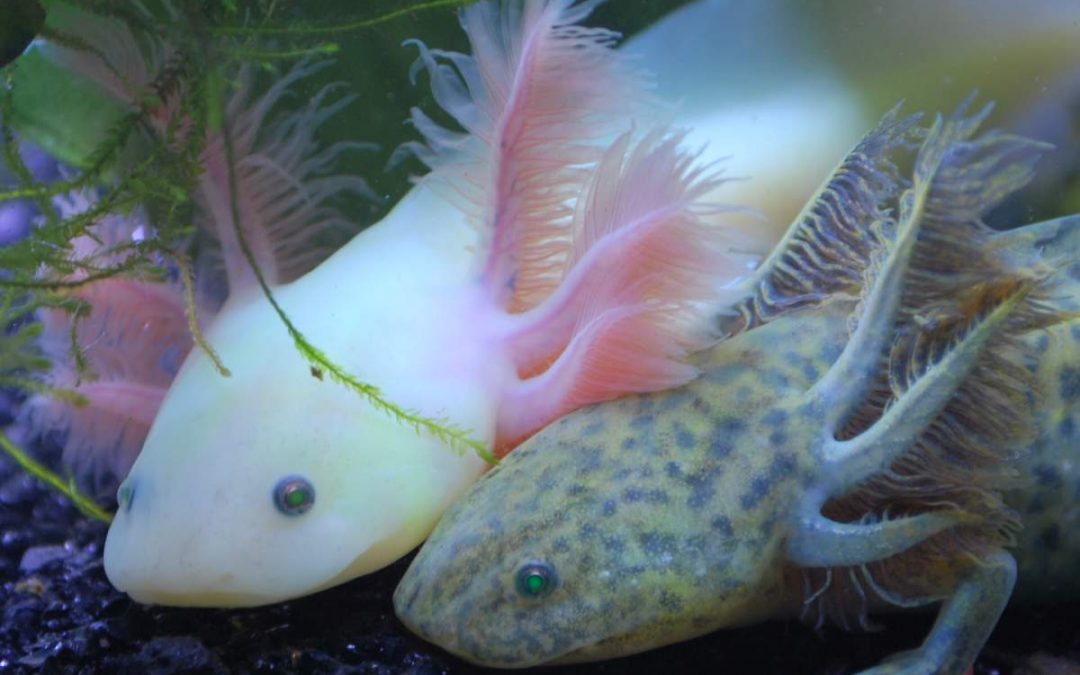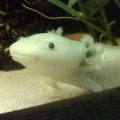The name ‘Axolotl’ is derived from the Aztecs, which is actually a combination of two words: ‘atl’ which means “water”, and ‘xolotl’, meaning “monster”. They live in water, canal and wetlands, and they were originally found in Lake Chalco and Lake Xochimilco, next to Mexico City, hence the name “Mexican Salamander.” It is also colloquially called as “walking fish.” But it is NOT a fish, and to answer the question above, and it also NOT a reptile, rather an amphibian.
Unlike other amphibians, Axolotls don’t undergo metamorphosis and develop into adulthood. Rather, they remain in their larval state and keep their gills, keeping them aquatic. They were once a delicacy in Mexico City, and a staple in Aztec diet, but now they’re considered critically endangered in the wild.
Evolutionary Distinctiveness
Class: Amphibia
Order: Caudata
Family: Ambystomatidae
Axolotls are closely related to Ambystomatidae (mole salamander), which deviated from other salamanders 140 million years ago. There are only few species that represents their genus Ambystoma, and they’re evolutionarily distinct member of salamanders, and amphibians as a whole.
This animal exhibits unique features, which is indicative of their evolution, such as “neotonous” life, which means they don’t develop into adult, rather, remain juvenile in form throughout its life (larval form.
There are actually two theories scientists try to use to explain neoteney, which happens in some mole salamanders. The first theory is that, their production of thyrtoxine hormone is compromised, either from too-cold water temperature which affects the hormone’s efficacy, or by the large number of species living in water that contains less iodine, which is needed in the production of thyroxine of the body. This affects the development of the species, causing even sexually mature adults to retain its larval characteristics.
The second theory is that, they were surrounded by hostile terrestrial environments, causing the specie to keep its aquatic characteristics to survive. This is actually a common train in species that lives in high-elevation ponds, such as in Mexico City.
Axolotl Habitat
Axolotl is a native in Mexico’s lakes and water channels. This animal needs deep-water lakes and other water bodies (natural or artificial canal) with plenty of aquatic vegetation. In the wild, they depend on vegetation with suitable structures, which cools the water and allows them to attach their eggs after fertilization. Lake Xochimilco for example, is known as “chinampa” or “floating garden”, as it is where local people grow their vegetables and flowers. This animal can be found in these water channels, as well as its branching lake areas.
Axolotl Distribution
A high concentration of axolotls can be found in Mexico City, especially in Lake Xochimilco and the near Chalco wetland. Both bodies of water are part of the complex five lakes of Mexico City that the Aztecs built their city upon.
Rather than distributing to different places, they congregate in a habitat conducive for their breeding and survival.
In 2010, Axolotls were on the brink of extinction due to the highly urbanization of Mexico City, which results to the pollution of its water. Today, they’re considered as endangered species and critically endangered in the wild due to their decreasing population.
And due to their amazing ability to regenerate limbs, axolotls are extensively used in scientific research.






 Author and long-time animal lover. Sharing knowledge on pet care through experience and the written word.
Author and long-time animal lover. Sharing knowledge on pet care through experience and the written word.